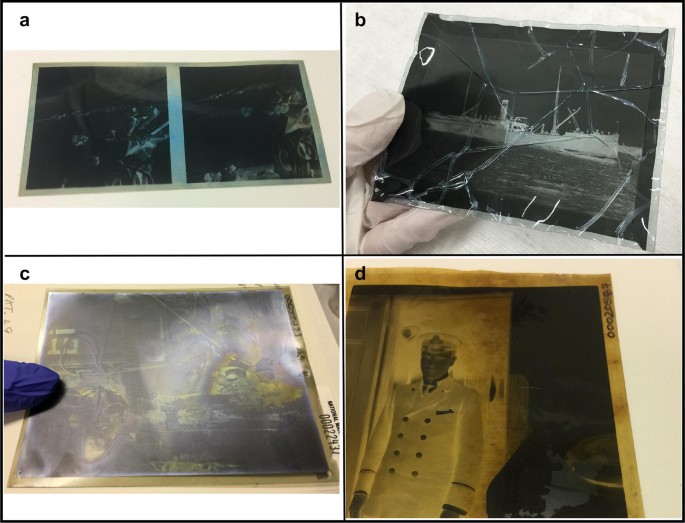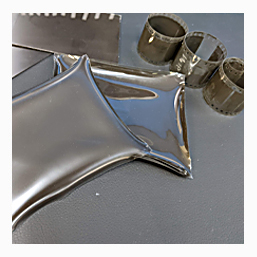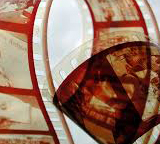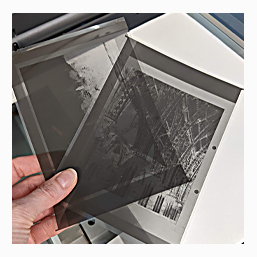Cellulose Acetate Photographic Film Digitising Solutions in Oxford UK
Archiving and Scanning Digitisation at Oxford Duplication Centre

Identification of cellulose nitrate and cellulose acetate film in historic photograph collections | Safety Acetate Film | Polyester Film to Archive Industry Standards
motion & cine film | audio | video | optical | photographic film | books | documents | Scan on Demand | FAQs
Acetate film can be identified by discolourisation towards pink and blue shades
Our services are highly recommended in the UK, providing high quality precision still photographic film scanning solutions for all your digital media requirements. Output digital files can be in any format, with typically any archive file converted to TIFF, with JPEG or PDF access files.
Cellulose acetate film came along in 1912. It was clearly marked “Safety Film” to indicate to users it was less hazardous (less combustible) than cellulose nitrate. It has issues too though. Over time it degrades and develops a strong vinegar smell, sometimes shrinking and becoming brittle or developing channeling which makes the image indecipherable. In new condition cellulose nitrate and cellulose acetate look very similar but as they age they can develop distinct differences. The most obvious is color. Aging acetate film changes color toward more pink or blue shades. This visual clue helped us identify most of the film we were given to look at.
Beginning in the mid-1920s, highly flammable nitrate film was slowly replaced with cellulose acetate film base. It became known as "Safety" film. Despite this name, cellulose acetates do have stability problems. Like cellulose nitrate, the deterioration of cellulose acetate is autocatalytic: once deterioration has begun, the degradation products induce further deterioration. It affects the plastic support of acetate film, causing it to become acidic, to shrink, and to give off of acetic acid producing a vinegary odor.
There are Six Levels of Acetate (Safety Film) Decay
Level 1: No deterioration
Level 2: The negatives begin to curl and they can turn red or blue
Level 3: The onset of acetic acid (vinegar smell); also shrinkage and brittleness
Level 4: Warping can begin
Level 5: The formation of bubbles and crystals in the film
Level 6: The formation of channeling in the film
Levels 1 - 4, the film can be copied. At Level 5, it may be possible to copy parts of films. At Level 6, we would suggest a specialist conservation company to provide binder removal and restoration.
What Do the Acetate Film Negatives Look Like

Photographic images showing examples of characteristic deterioration used to identify known cellulose nitrate and cellulose acetate samples, graded on the signs of visible deterioration. The deterioration of cellulose nitrate and cellulose acetate cannot be reversed. Low temperature storage is used by many heritage institutions to delay or slow down deterioration.
(a) Cellulose acetate showing level 2 blue coloured anti-halation dye separation deterioration
(b) Cellulose acetate showing level 6 channelling deterioration
(c) Cellulose nitrate showing level 2 iridescent mirroring
(d) Cellulose nitrate showing level 4 amber discolouration
How to Identify Acetate (Safety Film) Decay
- Labels: Check to see if the word ‘Safety Film’ is embossed or printed on the edge of the film. .
- Deterioration: If film is wrinkled or smells like vinegar, it’s most likely safety film.
- Dates:
- Assume that any film dated after 1950s is acetate film.
- Look for notches on the edge of any Kodak film dated from 1950s. If the first notch looks like a ‘U,’ it’s most likely safety film.
- For non-Kodak film from 1950's, and any film that can’t be dated – look for the signs of deterioration we mentioned above.
Don't Wait Too Long to Digitise Your Archives
We often write about the ever increasing short shelf life of still photographic film because the risks of this type of film merit a greater sense of urgency.
Our services are highly recommended in Oxfordshire, providing high quality precision photographic and document scanning solutions for all your digital media requirements. Output digital files can be in any format, with typically any archive file converted to TIFF, with JPEG or PDF access files.











